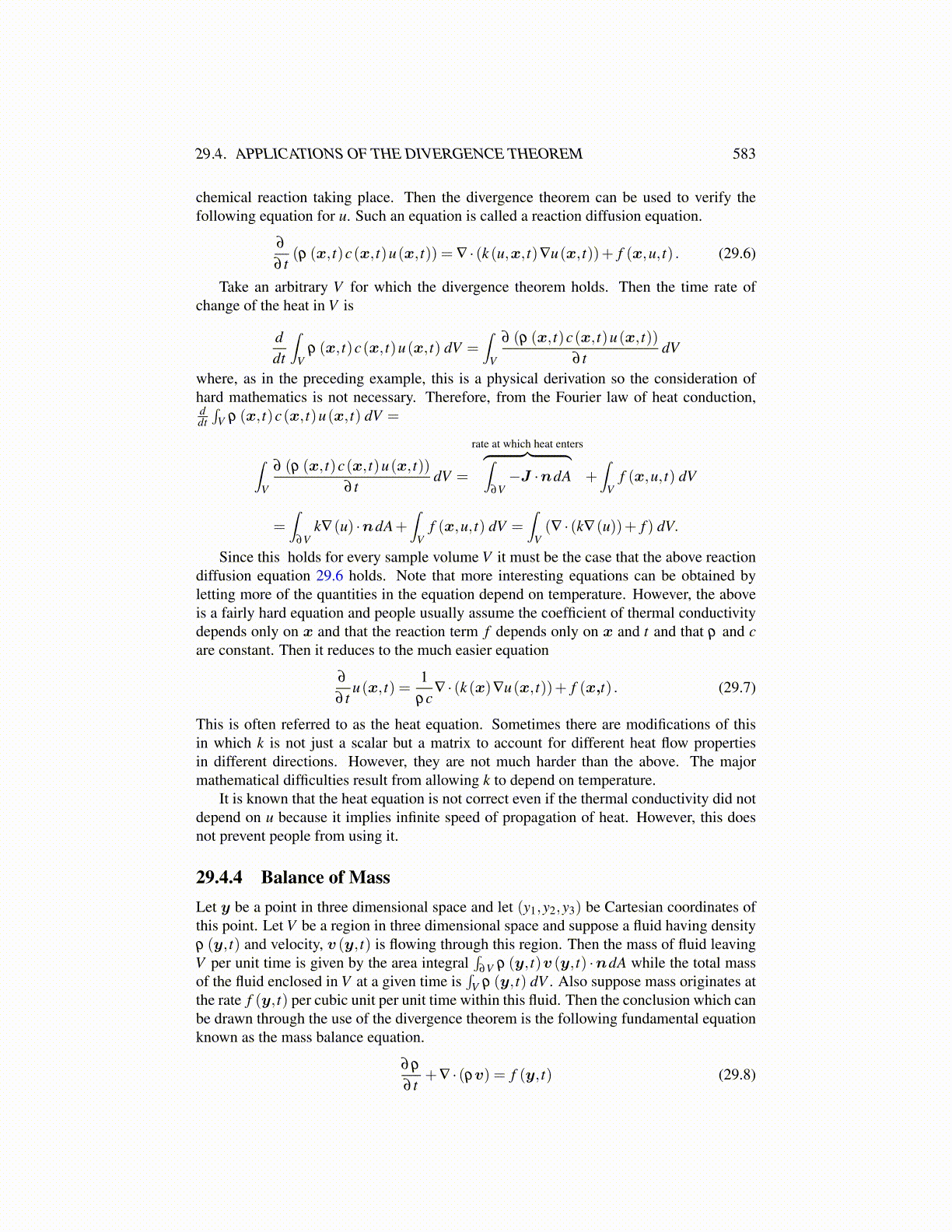
29.4. APPLICATIONS OF THE DIVERGENCE THEOREM 583
the sum taken over repeated indices. Since Vt was arbitrary, it follows
ρ (t,y) v̇ = b(t,y)+ei∂ (Ti j (t,y))
∂y j≡ b(t,y)+div(T )
where here divT is a vector whose ith component is given by
(divT )i =∂Ti j
∂y j.
The term ∂v∂ t +
∂v∂yi
∂yi∂ t , is the total derivative with respect to t of the velocity v. Thus you
might see this written asρv̇ = b+div(T ) .
The above formulation of the balance of momentum involves the spatial coordinates ybut people also like to formulate momentum balance in terms of the material coordinatesx. Of course this changes everything.
The momentum in terms of the material coordinates is∫V0
ρ0 (x)v (t,x) dV
and so, since x does not depend on t,
ddt
(∫V0
ρ0 (x)v (t,x) dV)=∫
V0
ρ0 (x)vt (t,x) dV.
As indicated earlier, this is a physical derivation, so the mathematical questions related tointerchange of limit operations are ignored. This must equal the total applied force. Thususing the repeated index summation convention,∫
V0
ρ0 (x)vt (t,x) dV =∫
V0
b0 (t,x) dV +∫
∂Vt
eiTi jn jdA, (29.10)
the first term on the right being the contribution of the body force given per unit volumein the material coordinates and the last term being the traction force discussed earlier. Thetask is to write this last integral as one over ∂V0. For y ∈ ∂Vt there is a unit outer normal n.Here y = y (t,x) for x ∈ ∂V0. Then define N to be the unit outer normal to V0 at the pointx. Near the point y ∈ ∂Vt the surface ∂Vt is given parametrically in the form y = y (s, t)for (s, t) ∈ D ⊆ R2 and it can be assumed the unit normal to ∂Vt near this point is
n=ys (s, t)×yt (s, t)|ys (s, t)×yt (s, t)|
with the area element given by |ys (s, t)×yt (s, t)| dsdt. This is true for y ∈ Pt ⊆ ∂Vt , asmall piece of ∂Vt . Therefore, the last integral in 29.10 is the sum of integrals over smallpieces of the form ∫
Pt
Ti jn jdA (29.11)
where Pt is parameterized by y (s, t), (s, t) ∈ D. Thus the integral in 29.11 is of the form∫D
Ti j (y (s, t))(ys (s, t)×yt (s, t)) j dsdt.